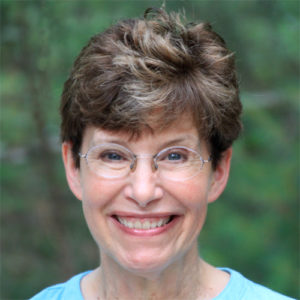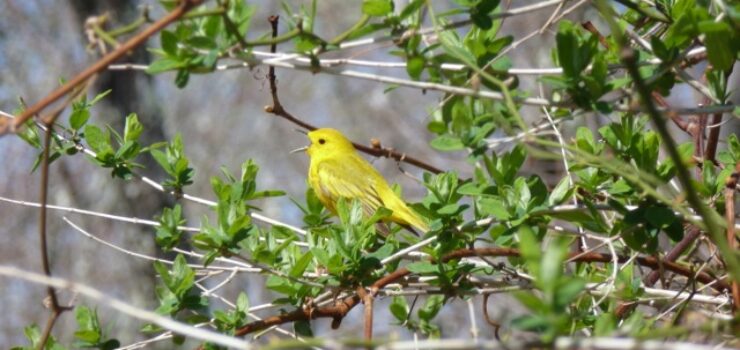Lights Out For 14 Million Birds Migrating Through South County
Between August and November, an estimated 14 million birds pass through South County on their long fall migration. Many of these migrants are young birds who hatched this year and who have never migrated before. Increasing light pollution is decreasing the number of birds that will survive migration, especially first-time migrants.
Charlestown is part of the Atlantic Flyway, one of the main routes for both the north and south bird migrations. Our town is the darkest area along the coast between New York and Boston, and it is also home to the Ninigret National Wildlife Refuge, which was established to protect migratory birds. The number of birds migrating through Charlestown is significant. The bird banding station at the Ninigret National Wildlife Refuge has the highest counts of any banding station in New England, with a very high proportion of young birds making their first migration. Not only are the total numbers significant, but over 30 of the species banded on the refuge are species of high conservation concern in the United States.
Light pollution refers to artificial light that alters the natural patterns of light and dark in ecosystems. More than 99% of North America’s population lives under a “lit sky.” The increasing use of lighting has modified the natural environment dramatically and impacts wild animals, including many species of migratory birds.
Light pollution attracts and disorients nocturnally migrating birds. Unnatural light-induced behaviors can mean they end up depleting their energy reserves and put them at risk of exhaustion, predation, and lethal collision. Artificial light can impact the timing and routes of migration in ways that decrease birds’ chances of surviving migration.
Natural darkness has conservation value in the same way that clean water, air, and soil have and should be protected.
Charlestown has an outdoor lighting ordinance for commercial applications, but homeowners can voluntarily avoid lighting the night sky. To avoid lighting the night sky, outdoor lights need to be fully shielded and pointing downward. Lights should only be on when needed, light just the areas that need it, and be no brighter than necessary. Choose lighting with warm colors of 3000 Kelvin or less to avoid “blue light” emissions, which can be harmful to both wildlife and humans.
The International Dark Sky Association has examples of fully shielded light fixtures that minimize skyglow, glare, and light trespass on their website.
We can all work to protect migratory birds and the night sky by shielding our outdoor lights, using motion detectors, or turning lights off when not needed. Our beautiful town is enriched by these international travelers, but their protection requires a year-round effort.

The banner image is a photograph of a Yellow Warbler in Charlestown by Frances Topping. Yellow Warblers are long distance migrants. They breed across North America and spend winters in Central America and northern South America. In both spring and fall, they migrate earlier than most other warblers.

You can learn more about the author, Ruth Platner, at her profile page.
Visit Our “Charlestown Dark Sky” Page For More On The Light Pollution Issue

October 11, 2023 @ 9:16 am
Thanks Ruth, excellent article and illustration.
October 6, 2023 @ 5:00 am
Do you still have Whip-poor-wills and Bob Whites in RI? I grew up in Cross mills on Charlestown pond road. I used to lay in bed with my windows open and listen to the Whip-poor-wills or Bob Whites. There were plenty of them at that time( 1943)
October 6, 2023 @ 6:57 am
Bob Whites are no longer in Rhode Island. They were still here when I moved here in the 1970’s and still here in the 1980’s, but they are gone now. I don’t remember when I last heard one, but I also miss their song. Whip-poor-wills are still here, but less common. Half of all birds (by population numbers) in the north-east are gone since 1970 and some species are gone too.